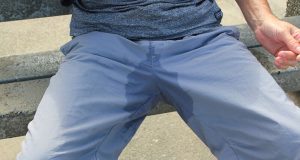Submitted by Dr. George Traitses
The term “arthritis” means “joint inflammation” and is often used in reference to rheumatic diseases. Rheumatic diseases include more than 100 conditions.
Years ago, doctors hardly ever told rheumatoid arthritis patients to “go take a hike” or “go for a swim.” Arthritis was considered an inherent part of the aging process and a signal to patients that it’s time to slow down. However, research and clinical findings since then show that there is much more to life for arthritis patients than the traditional recommendation of bed rest and drug therapy.
What is rheumatoid arthritis?
The word “arthritis” means “joint inflammation” and is often used in reference to rheumatic diseases. Rheumatic diseases include more than 100 conditions: gout, fibromyalgia, osteoarthritis, psoriatic arthritis, and many more. Rheumatoid arthritis is also a rheumatic disease, affecting about 1 percent of the Canadian population (about 330 thousand people.) Although rheumatoid arthritis often begins in middle age and is more frequent in the older generation, young people and children can also suffer from it. Rheumatoid arthritis causes pain, swelling, stiffness, and loss of function in the joints.
Several features distinguish it from other kinds of arthritis:
• Tender, warm, and swollen joints.
• Fatigue, sometimes fever, and a general sense of not feeling well.
• Pain and stiffness that last more than 30 minutes after a long rest.
• The wrist and finger joints closest to the hand are most frequently affected. Neck, shoulder, elbow, hip, knee, ankle, and feet joints can also be affected.
• The condition is symmetrical. If one hand is affected, the other one is, too.
• The disease can last for years and can affect other parts of the body, not only the joints.
Should Arthritis Patients Exercise?
Exercise is critical in successful arthritis management. It helps maintain healthy and strong muscles, joint mobility, flexibility, and endurance. It also helps control weight. Rest, on the other hand, helps to decrease active joint inflammation, pain, and fatigue. Arthritis patients need a good balance between the two: more rest during the active phase of arthritis, and more exercise during remission. During acute systematic flare-ups or local joint flare-ups, patients should put joints gently through their full range of motion once a day, with periods of rest. To see how much rest is best during flare-ups, patients should talk to their health care providers. If patients experience unusual or persistent fatigue, increased weakness, a decrease in range of motion, an increase in joint swelling, or pain that lasts more than one hour after exercising, they should talk to their health care providers.
Nutritional Recommendations
Nutrition may provide complementary support to arthritis medications. Some foods and nutritional supplements can be helpful in managing arthritis:
• Fatty-acid supplements like eicosapentaenoic acid (EPA), docosahexaenoic acid (DHA), and gamma linolenic acid (GLA). Deep-sea fish, (salmon, tuna, herring, and halibut) are sources of EPA and DHA. Black currants and borage seed contain GLA.
• Turmeric, ginger, and nettle leaf extract.
• A vegetarian or low-allergen diet.
The benefits and risks of most of these agents are being researched. Before taking any dietary supplement, especially if you are using medication to control your condition, consult with your health care provider.
How can I protect myself and my family from H1N1?
If you suffer from rheumatoid arthritis, your doctor of chiropractic can help you plan an exercise program that will:
• Help you restore the lost range of motion to your joints.
• Improve your flexibility and endurance.
• Increase your muscle tone and strength.
Doctors of chiropractic can also give you nutrition and supplementation advice that can be helpful in controlling and reducing joint inflammation.
Recommended Exercises for Patients with Arthritis
• Range-of-motion exercises: Activities like stretching and dancing can help maintain normal joint movement and increase joint flexibility. Perform such activities every day, or every other day.
• Strength training: Weight lifting can help support and protect the joints affected by arthritis. Unless pain or swelling occurs and is severe, perform such exercises every other day.
• Aerobic or endurance exercises: Walking, swimming or riding a bike can help improve your cardiovascular system while toning your muscles and controlling your weight.
Exercise 20 to 30 minutes three times a week unless pain and swelling are severe.
For more information on health and safety visit the Ontario Chiropractic Association Web site at www.chiropractic.on.ca or call 1-877-327-2273. Dr. George Traitses, 416-499-5656, www.infinite-health.com.
 Pride News Canada's Leader In African Canadian & Caribbean News, Views & Lifestyle
Pride News Canada's Leader In African Canadian & Caribbean News, Views & Lifestyle





